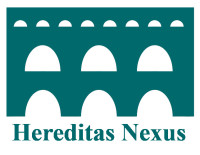
Reviewer: Wouter van Dijk
Atlas of the Irish Revolution, John Crowley, Donal Ó Drisceoil and Mike Murphy (editors). Associate editor: John Borgonovo
Cork University Press, Cork 2017
ISBN: 9781782051176
Hardcover with dust jacket, lavishly illustrated in colour, with maps, charts, extensive annotation and index
964 pages
€ 59,00
The Atlas of the Irish Revolution
The period of the Irish Revolution, ca. 1912-1923, forms a watershed in modern Irish history. It was the period in which the Irish national state took shape, and the outcome of the conflict of that time still determines the status of the two entities that exist today; the Irish Republic and Northern Ireland.
The idea for the atlas that has now been created demonstrates an enormous ambition. Never before has this period of Irish history been examined so extensively. Dozens of authors and contributors have worked on the more than 140 articles that make up the atlas. Authors from numerous disciplines are represented: of course historians, but also cartographers, sociologists, art historians, archaeologists and journalists. The atlas contains more than 300 maps and hundreds of images. The latest ideas and studies find their place in the atlas, thus providing a great overview of the current state of science regarding the revolutionary period. Many subjects that have traditionally received little attention in the nationalist story are dealt with, such as the role of trade unions and women.
The editors have deliberately chosen that the contributions of some authors are at odds with those of others and contradict each other. For example, where one author points to long-term causes and the other places a lot of emphasis on particular events and accidental developments. In this way the reader gets a picture of the current scientific discussions as complete as possible and it is up to the reader to judge. History has many sides, and it is unjustifiable to show only one side of the story. Many historical documents have also been added to the atlas, which in many cases have been published for the first time in this volume. Thus, history comes very close.
The book is made up of ten sections, in which several small chapters chronologically describe the events of the revolutionary period. First, context is offered about the nineteenth century that formed the prelude to the eruption at the beginning of the twentieth century. This is followed by the Home Rule crisis, the First World War and the Easter Revolt. Next, the short interlude is described between the end of the world war and the beginning of the War of Independence and during which tensions in the political and social field increased. Three sections have been set aside for the War of Independence; one focusing on the military dimensions, one concerning political, social and international perspectives and a section that explores the war geographically per region. The last three sections of the book are devoted to the Treaty and the subsequent civil war, post-war developments, and finally the commemorative culture and memory of this turbulent period in recent history.
The atlas is a great asset for anyone interested in Irish history. The level of detail is amazing, the illustration material is beautiful and varied and the entire book is beautifully arranged. The variety of sub-topics is impressive. There are sections on urban and rural living conditions before the revolution, the Battle of the Somme in the First World War, the first Daíl, Cumann na mBan in the War of Independence, and the social basis of the Civil-War divide. All in all, this makes the Atlas of the Irish Revolution the standard work for this period in Irish history for a long time. This weighty tome of almost five kilograms should certainly not be missing in the bookcase of lovers of Irish history! Do make sure you have a sturdy bookshelf. Not only the book itself but also the content is heavy, but very rewarding!
Wouter van Dijk
